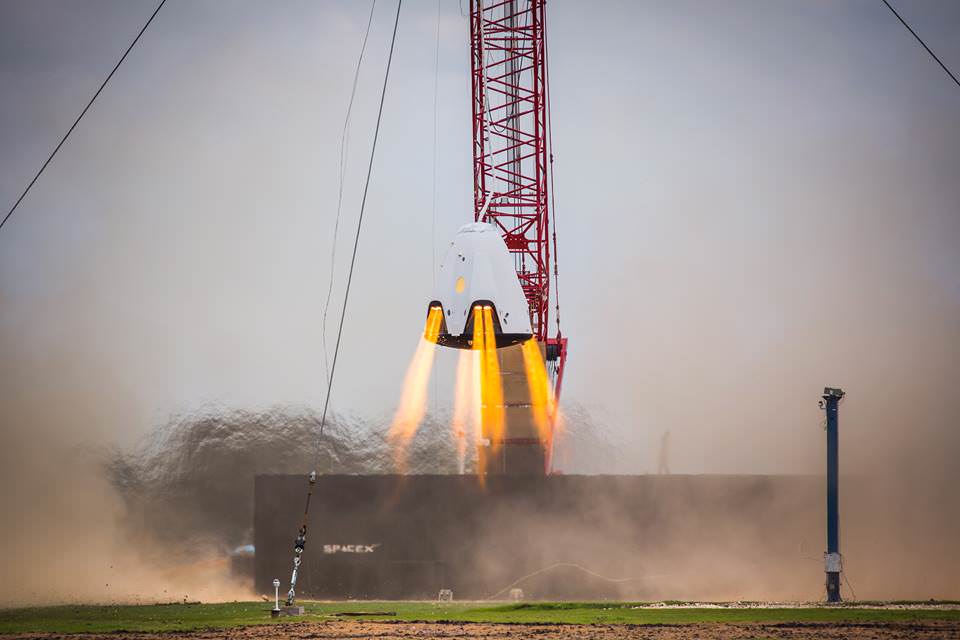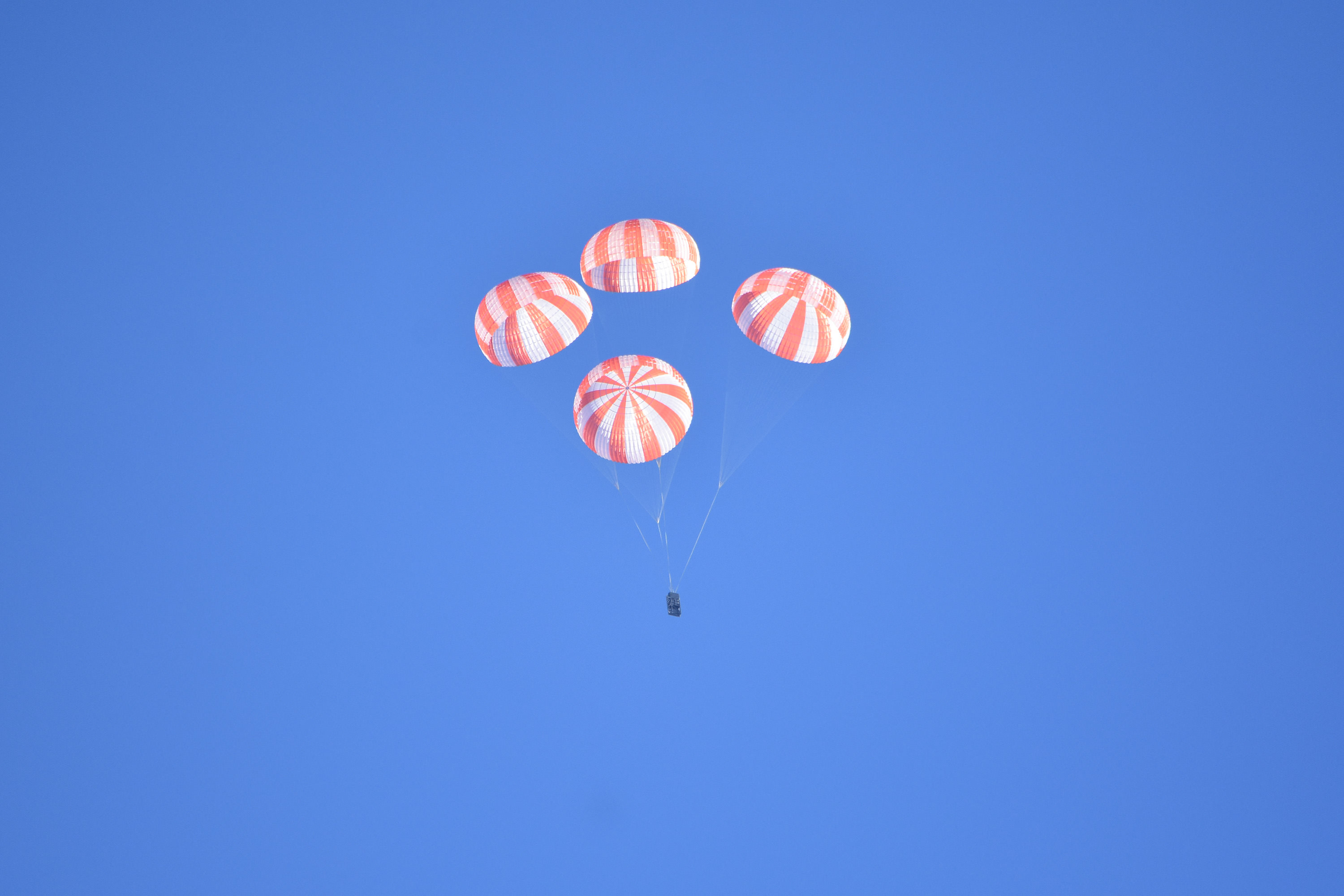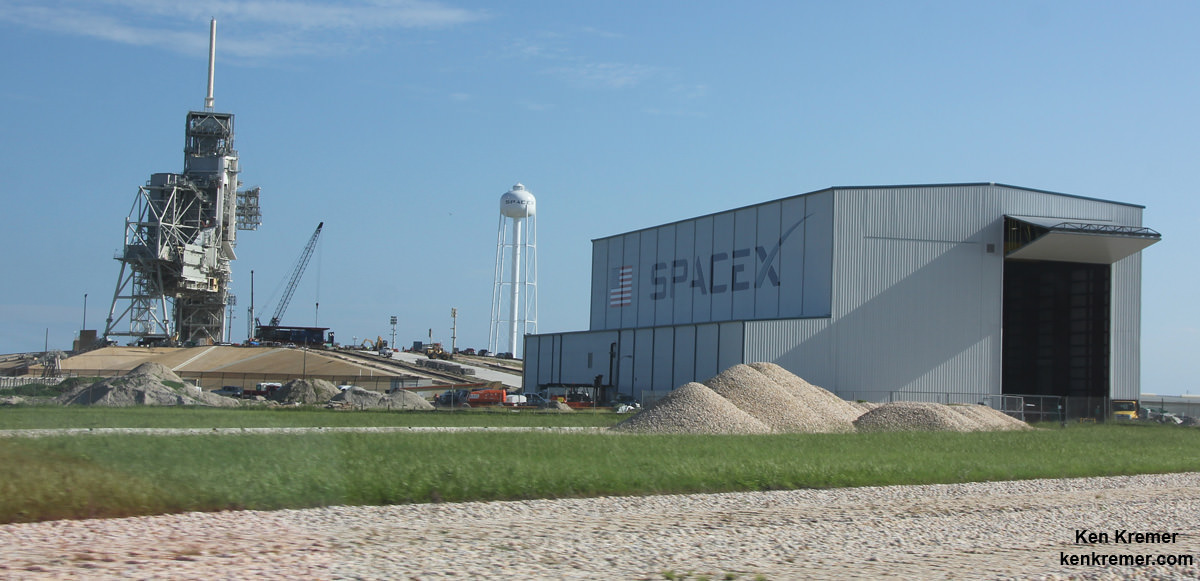
On the road to restoring US Human spaceflight from US soil, SpaceX conducted a pair of key tests involving a propulsive hover test and parachute drop test for their Crew Dragon vehicle which is slated to begin human missions in 2017.
SpaceX released a short video showing the Dragon 2 vehicle executing a “picture-perfect propulsive hover test” on a test stand at the firms rocket development facility in McGregor, Texas.
The video published last week shows the Dragon 2 simultaneously firing all eight of its side mounted SuperDraco engines, during a five second test carried out on Nov. 22, 2015.
Using the SuperDragos will eventually enable pinpoint propulsive soft landings like a helicopter in place of parachute assisted landings in the ocean or on the ground.
The video clip seen below includes both full speed and slow motion versions of the test, showing the vehicle rising and descending slowly on the test stand.
Video caption: SpaceX Dragon 2 crew vehicle, powered by eight SuperDraco engines, conducts propulsive hover test firing at rocket development facility in McGregor, Texas.
The eight SuperDraco thrusters are mounted in sets 90 degrees apart around the perimeter of the vehicle in pairs called “jet packs.”
The SuperDracos generate a combined total of 33,000 lbs of thrust.
SpaceX is developing the Crew Dragon under the Commercial Crew Program (CCP) awarded by NASA to transport crews of four or more astronauts to the International Space Station.
“This test was the second of a two-part milestone under NASA’s Commercial Crew Program,” said SpaceX officials. “The first test—a short firing of the engines intended to verify a healthy propulsion system—was completed November 22, and the longer burn two-days later demonstrated vehicle control while hovering.”
The first unmanned and manned orbital test flights of the crew Dragon are expected sometime in 2017. A crew of two NASA astronauts should fly on the first crewed test before the end of 2017.

Initially, the Crew Dragon will land via parachutes in the ocean before advancing to use of pinpoint propulsive landing.
Thus SpaceX recently conducted a parachute drop test involving deployment of four red-and-white parachutes unfurling high above the desert near Coolidge, Arizona using a mass simulator in place of the capsule.
Video Caption: SpaceX performed a successful test of its parachute system for the Crew Dragon spacecraft near Coolidge, Arizona, as part of its final development and certification work with NASA’s Commercial Crew Program. Using a weight simulant in the place of a boilerplate spacecraft, four main parachutes were rigged to deploy just as they would when the Crew Dragon returns to Earth with astronauts aboard. Credit: NASA/SpaceX
“The mass simulator and parachutes were released thousands of feet above the ground from a C-130 cargo aircraft. This test evaluated the four main parachutes, but did not include the drogue chutes that a full landing system would utilize,” said NASA.
Since the CCP program finally received full funding from Congress in the recently passed Fiscal Year 2016 NASA budget, the program is currently on track to achieve the orbital test flight milestones.
Boeing and SpaceX were awarded contracts by NASA Administrator Charles Bolden in September 2014 worth $6.8 Billion to complete the development and manufacture of the privately developed Starliner CST-100 and Crew Dragon astronaut transporters under the agency’s Commercial Crew Transportation Capability (CCtCap) program and NASA’s Launch America initiative.
The Crew Dragon will launch atop a SpaceX Falcon 9 rocket from launch Complex 39A at the Kennedy Space Center. The historic launch pad has been leased by SpaceX from NASA and is being refurbished for launches of the Falcon 9 and Falcon Heavy.

Stay tuned here for Ken’s continuing Earth and planetary science and human spaceflight news.

The Dragon ROCKS! Can’t wait to see a manned landing!
Rumor mill has it that Elan is about ready to release some of SpaceX’s Mars x-port and colony designs… izzat true?